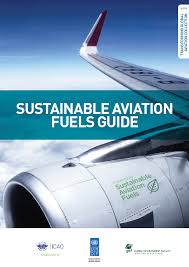Fifty New Skies: Aviation Connectivity Soars!
The global aviation industry is taking flight – literally! In a significant boost to international travel and connectivity, a staggering fifty new aviation routes are launching across the world. This expansion promises not only to link previously underserved regions but also to provide travelers with a wider array of choices and competitive pricing. This major infrastructure upgrade has been in the planning for a while, and now it's all coming together, creating a new global web.
This isn’t just about more flights; it's about bridging cultures, boosting economies, and facilitating global collaboration. As the world recovers and adapts, this expansion signals a powerful resurgence in the demand for travel and trade.
Why Now? The Drivers Behind the Expansion
Several factors are fueling this wave of new routes. Firstly, the easing of travel restrictions worldwide has unlocked pent-up demand for both leisure and business travel. Airlines are eager to capitalize on this renewed interest. Secondly, advancements in aircraft technology, particularly the development of more fuel-efficient and long-range aircraft, are making previously unviable routes now economically feasible. For example, many airlines are adopting the A321XLR, allowing smaller airports to be connected to major hubs.
The surge is partially driven by post-pandemic demand and the development of more fuel-efficient aircraft.
Finally, strategic partnerships and code-sharing agreements between airlines are enabling them to expand their networks without the need for massive capital investment. This collaborative approach allows airlines to share resources and expertise, making route expansion more accessible and efficient.
Where Are We Going? Key Routes and Destinations
The new routes span continents, connecting major cities with emerging destinations. Expect to see an increase in flights between North America and Southeast Asia, as well as enhanced connectivity within Europe and Africa. Several airlines are also focusing on expanding their presence in South America, offering new routes to popular tourist hotspots and business hubs. A growing number of flights are serving smaller regional airports, boosting business and tourism. 30% of the new routes connect smaller regional airports with major international hubs.
Specific destinations to watch include increased access to cities in Vietnam, the Philippines, and Indonesia from North America. Within Europe, several low-cost carriers are expanding their networks to include smaller, less-traveled cities in Eastern Europe. Furthermore, airlines are strengthening their presence in African markets, offering new routes to destinations like Nairobi, Accra, and Lagos.
Quote: “This is a game-changer for global connectivity,” says aviation analyst John Miller. “These new routes will not only benefit travelers but also stimulate economic growth in the regions they serve.”
What Does This Mean for You?
The launch of these new routes translates into numerous benefits for travelers:
- More Choices: With a wider array of routes available, travelers have greater flexibility in planning their trips.
- Competitive Pricing: Increased competition among airlines is likely to drive down fares, making air travel more affordable.
- Easier Access: New routes to previously underserved destinations will make it easier to reach remote or less accessible areas.
- Reduced Travel Time: Direct flights can significantly reduce travel time, making journeys more convenient.
Behind the Scenes: Infrastructure and Logistics
The successful launch of these new routes requires significant investment in infrastructure and logistics. Airports are undergoing expansions to accommodate increased traffic, and air traffic control systems are being upgraded to ensure the safe and efficient flow of aircraft. Airlines are also investing in training programs to prepare their staff for the demands of these new operations.
Airports are undergoing significant expansions to accommodate the increased traffic.
Air traffic control systems are being upgraded to handle the growing number of flights.
The preparation is not without its challenges. Airlines are currently grappling with the rising costs of fuel and labor shortages and supply chain issues. Navigating these headwinds while ensuring the smooth operation of the new routes will be critical to their success. As one CEO commented, “Careful resource management will be the key to unlocking the great potential of these routes.”
The Future of Flight: What’s Next?
The launch of these fifty new aviation routes is just the beginning. As the world becomes increasingly interconnected, we can expect to see continued growth in the aviation industry. Airlines are constantly exploring new markets and developing innovative solutions to meet the evolving needs of travelers.
Industry analysts project a 15% increase in air travel over the next year as a direct result of these new routes.
Airlines are continuously exploring new markets and innovative travel solutions.
Charting a Course for Connectivity: A Brighter Future
The introduction of these fifty new routes represents a significant milestone in the evolution of the aviation industry. By connecting people, cultures, and economies, these new routes have the power to reshape the world. As we embark on this exciting journey, one thing is clear: the future of flight is brighter than ever before.
The launch of 50 new aviation routes marks a significant leap in global connectivity, offering more choices, competitive pricing, and easier access to destinations worldwide. Buckle up and get ready to explore!




